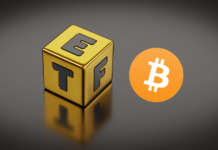While bitcoin continues to enjoy its mercurial price rise in 2021, the altcoins are also riding the price wave. However, along with the price pump, altcoins market dominance has also seen a shift. The market dominance wrestle between altcoins and bitcoins has been going on for years now.
At present over 6000 altcoins are being traded in the cryptocurrency market. At the time of press, their aggregated market cap dominance is close to 37%. In April 2013, bitcoin market dominance was somewhere around 95%. However, in 2017 its dominance started dropping and melted down 40%. This was the time when Ethereum and Ripple had gained a significant market presence. The altcoin enthusiasts started believing that the Ethereum market cap might flip the BTC market cap. But that never happened.
In the recent past, the bitcoin market cap dominance crawled back and the CoinGecko data suggests that the current market cap dominance of bitcoin is over 62%. The interesting fact is that slowly and steadily, altcoins racked in almost 37% of the bitcoin’s market share.
Each of these 6000 altcoins has its own unique offering. While some facilitate faster payment times, some are more efficient for cross-border transactions and others offer a diverse array of benefits.
In this article, we will answer all your questions about altcoins.
The term altcoin is a combination of terms “alternate” and “coin”. Thus, all the cryptocurrencies other than bitcoin are basically altcoins (alternate coins). Bitcoin’s phenomenal success triggered a wave of disruption and emphasized the need for a peer-to-peer currency. Interestingly, these were initially developed to overcome the limitations of bitcoin.
The earliest notable altcoin was Namecoin or NMC. It was a fork of the bitcoin protocol and used the same proof-of-work (PoW) algorithm. Furthermore, the purpose of this altcoin project was to help internet users overcome privacy issues. Thus, it allowed users to register and mine NMC using their own .bit domains. In November 2013, the NMC price touched its all-time high of $10.16. However, the project did not last long and the coin is considered dead now. But it did help people realize that there is a space for altcoins to grow.
How are altcoins different from bitcoin?
Bitcoin protocol follows a set of rules and this is primarily where altcoins differ from bitcoin. To state an example, bitcoin uses the SHA-256 algorithm, Litecoin (a leading altcoin) uses scrypt algorithm which supports faster transaction processing. Following are the advantages and disadvantages of altcoins over bitcoin:
Pros
Overcome bitcoin’s limitations
Blockchain.com data shows that in June 2016, Bitcoin Network throughput was close to 2 TPS. Over the last 6 years, the network throughput has scaled to 4 TPS. However, this is not sufficient to handle the influx of transactions in the last 6 years. This is one area where altcoins are trying to overcome bitcoin’s limitations. Other than that, certain altcoins are trying to mine at a lower cost and other such factors.
Competitive environment
Imagine if bitcoin was the only cryptocurrency in the entire space. In the absence of competition, the network might not have scaled or improved this much. Thus, the existence of altcoins puts pressure on bitcoin enthusiasts to improve the network.
Transaction advantages
One of the major advantages offered by altcoins is that they offer a better network for supporting low fees transactions at higher speeds.
Cons
Volatility
Bitcoin continues to enjoy beginner’s advantage. Over the years, it has become a store of value and is popularly known as digital gold. However, the altcoins continue to face price volatility and their price is mostly driven by bitcoin price movement.
Rug Pulls
With over 6000 altcoins in the market, traders are still unsure which ones have a legit project in the background. As a result, the altcoin market exposes traders to frauds and scams.
Types of Altcoins
Mining-Based altcoins
Mining based altcoin networks use proof-of-work or proof-of-stake consensus protocol. Just like bitcoin, these altcoins use a PoW or PoS algorithm to validate a transaction and mine a new coin. Ethereum is also a PoW mining-based altcoin that is now slowly transitioning to PoS.
Stablecoins
Stablecoins are cryptocurrencies backed by a dollar or gold equivalent. These serve the purpose of reducing the price volatility issue faced by most of the cryptocurrencies. Tether is an example of a very popular stablecoin backed by the US dollar.
Security Tokens
A crypto token subjected to federal security regulations is a security token. This token derives its value from the external, tradable asset. Furthermore, these tokens entitle holders to profit sharing, voting, equity, dividends, and buy-back rights.
Utility Tokens
These tokens are also known as application tokens and are used to access a product or a service. After the 2017 ICO boom, utility tokens became very popular. Most of the ERC20 tokens are utility tokens. For example, Filecoin, Siacoin, and Civic.
Why will demand altcoins grow in 2021?
Experts believe 2021 is poised to be a year of the altcoins. As the bitcoin prices continue to soar higher, it is slowly becoming an asset beyond the reach of an average retail investor. Unlike bitcoin, many potential altcoins are still within an affordable price range of retail investors. Moreover, bitcoin might not yield 10X or 100X gains quickly. But an altcoin like DOT, ENJ, and more hold all the promise to grow multi-folds.



























